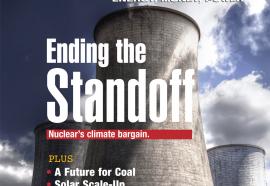Balance of Power
Large grids can integrate more wind—without major burdens.
Despite the variable nature of the resource, wind can be managed so that it will not impair the reliability of a utility system. The Federal Energy Regulatory Commission proposed a rule that would require changes to the way transmission service is scheduled, which would enhance the ability of balancing authorities to integrate wind.











